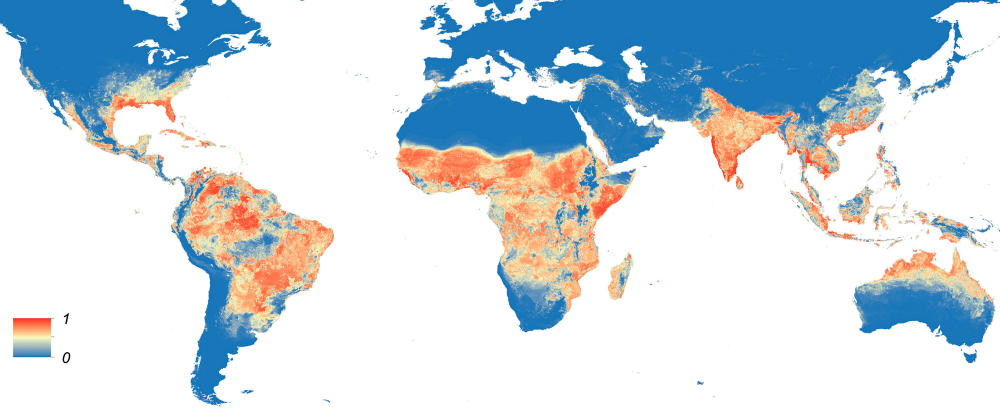Zika’s arrival in the U.S. this summer seems almost inevitable, health officials keep saying.
The virus has already touched down in northern Mexico and Puerto Rico. And just this week, the Centers for Disease Control and Prevention said the number of states with virus-carrying mosquitoes was larger than previously thought.
So the looming question is: Once Zika is here, how big will the outbreak be?
No one has a crystal ball, especially when it comes to infectious diseases. But we can get a few clues about what might happen by looking at two factors: how Zika has behaved elsewhere and how similar viruses have behaved here in the U.S.
Let’s start with the first point.
Last week scientists estimated how contagious Zika is in Colombia. Specifically, they calculated what’s called the reproduction number, or “Ro” (R nought). It’s a mathematical term that tells you the number of people who catch the disease from one sick person, on average, in an outbreak.
In Colombia, Zika’s Ro was between three and six, scientists at the Universidad Tecnologica de Pereira reported in the journal Travel Medicine and Infectious Diseases. Each person who caught Zika spread it to about four others during the outbreak.
An Ro of four sounds a bit scary. SARS has an Ro of about four. So does HIV. By comparison, the Ro for Ebola in West Africa was only between 1.5 and 2.0
So you can see why Zika has quickly swept across the Western Hemisphere, while Ebola pretty much stayed put in West Africa.
“An Ro of four tells you need to move fast, early on in an outbreak, to break transmission,” says Dr. Scott Lillibridge, an epidemiologist at the Texas A&M Health Science Center School of Public Health.
But unlike Ebola, Zika requires mosquitoes to spread it. So the Ro depends largely on the environment: how many mosquitoes there are, how often they get the chance to bite people and how dense the population is. That’s why screens on houses, air conditioning and suburban living all cut down on the risk of mosquito-borne viruses.
“Obviously, we’re going to do mosquito control here in the U.S. So we’re going interrupt Zika transmission,” Lillibridge added.
And then Zika’s Ro will be much lower in the U.S. than Colombia. How much lower?
For that, let’s look at another virus that’s closely related to Zika: dengue.
It’s spread by the same mosquito — Aedes aegypti — as Zika. And in tropical climates, dengue has an Ro comparable to that of Zika. Just yesterday, the World Health Organization tweeted: “Risk of dengue transmission = risk of #ZikaVirus transmission.”
Each year, dengue sickens millions of people in the Western Hemisphere. But here in the U.S., dengue causes only a sprinkling of small outbreaks.
For instance, this past winter, Hawaii recorded about 250 dengue cases on the Big Island. In 2010, the Florida Keys recorded about 60 cases. And back in 2003, Houston had a dengue outbreak, but health officials didn’t realize it until a decade later when scientists combed through old medical samples.
“It’s true — periodically people come back to the states with diseases, like dengue. And periodically, we have a small outbreak,” Lillibridge says. “So why worry about Zika?”
For one big reason, he says: “Zika’s effect on unborn children is devastating.” Even a single case could be catastrophic for a family.
9(MDA3MTA1NDEyMDEyOTkyNTU3NzQ2ZGYwZg004))
